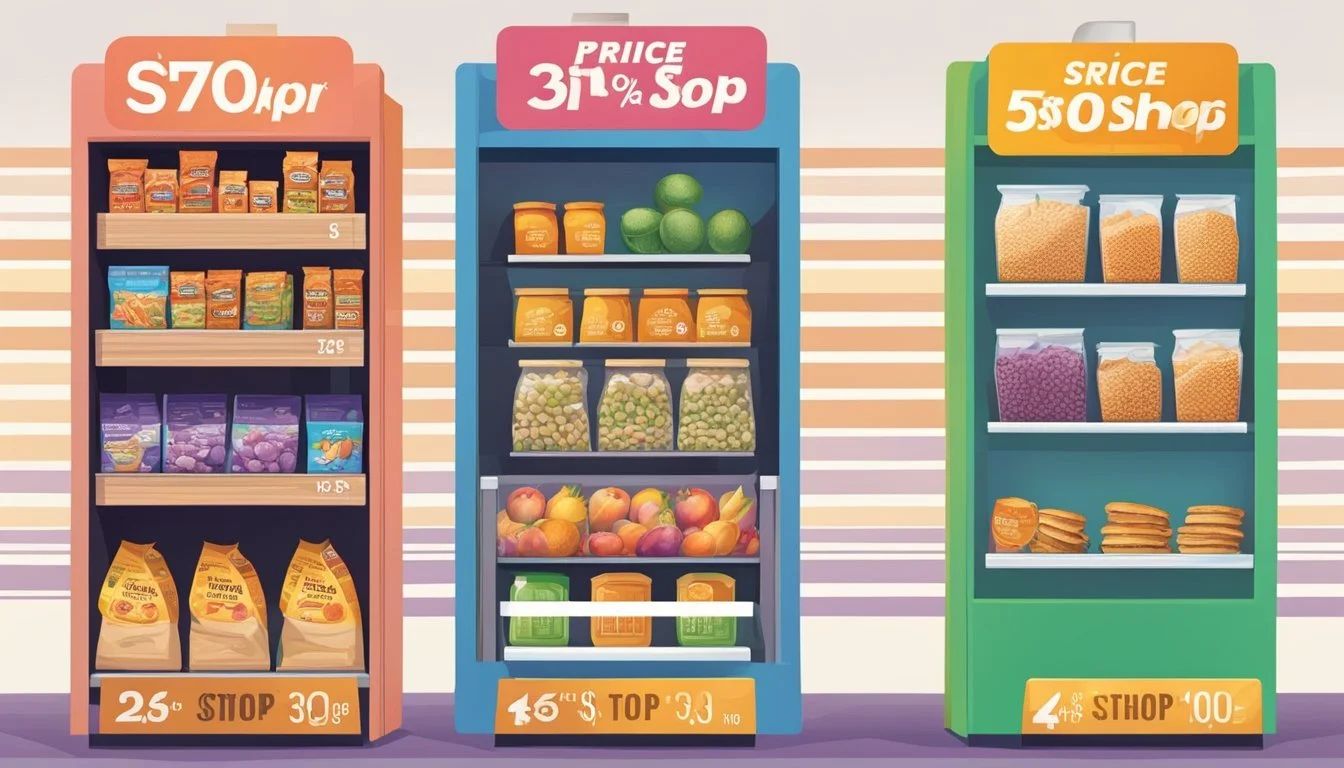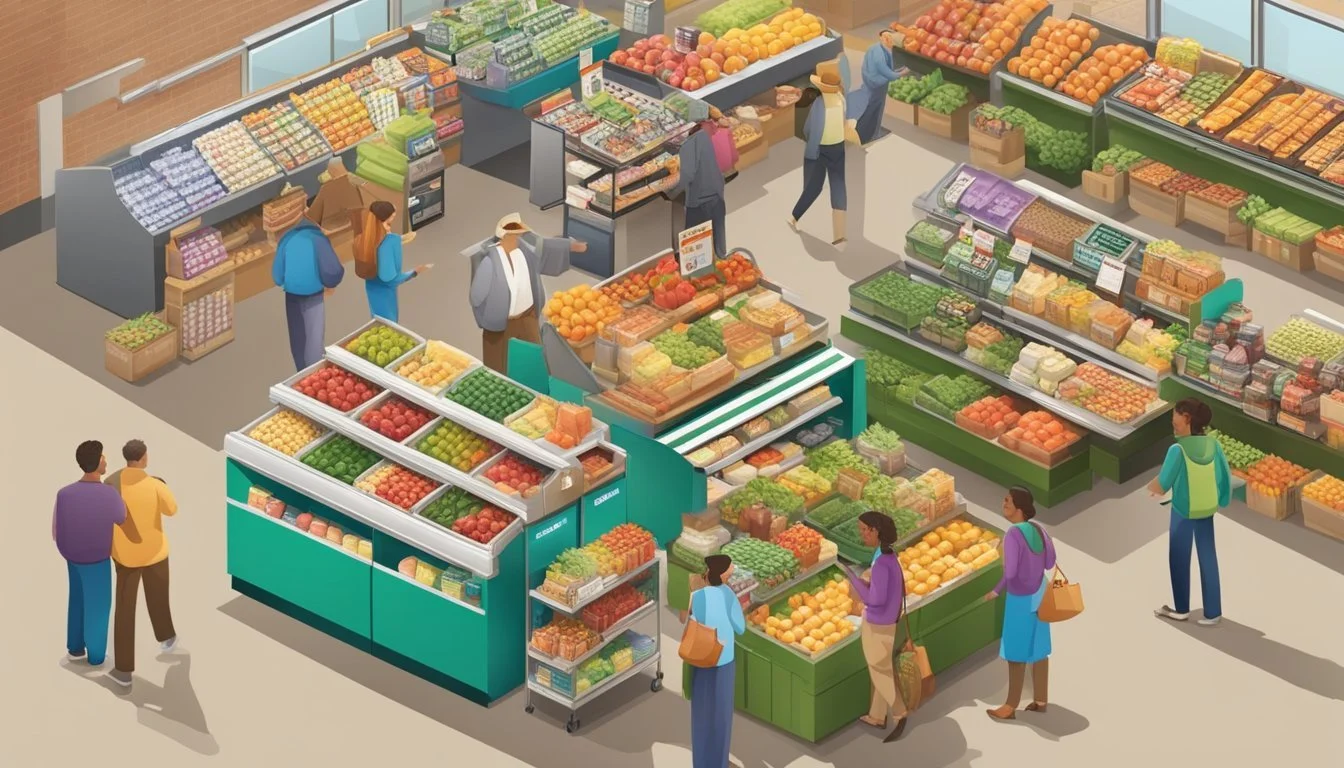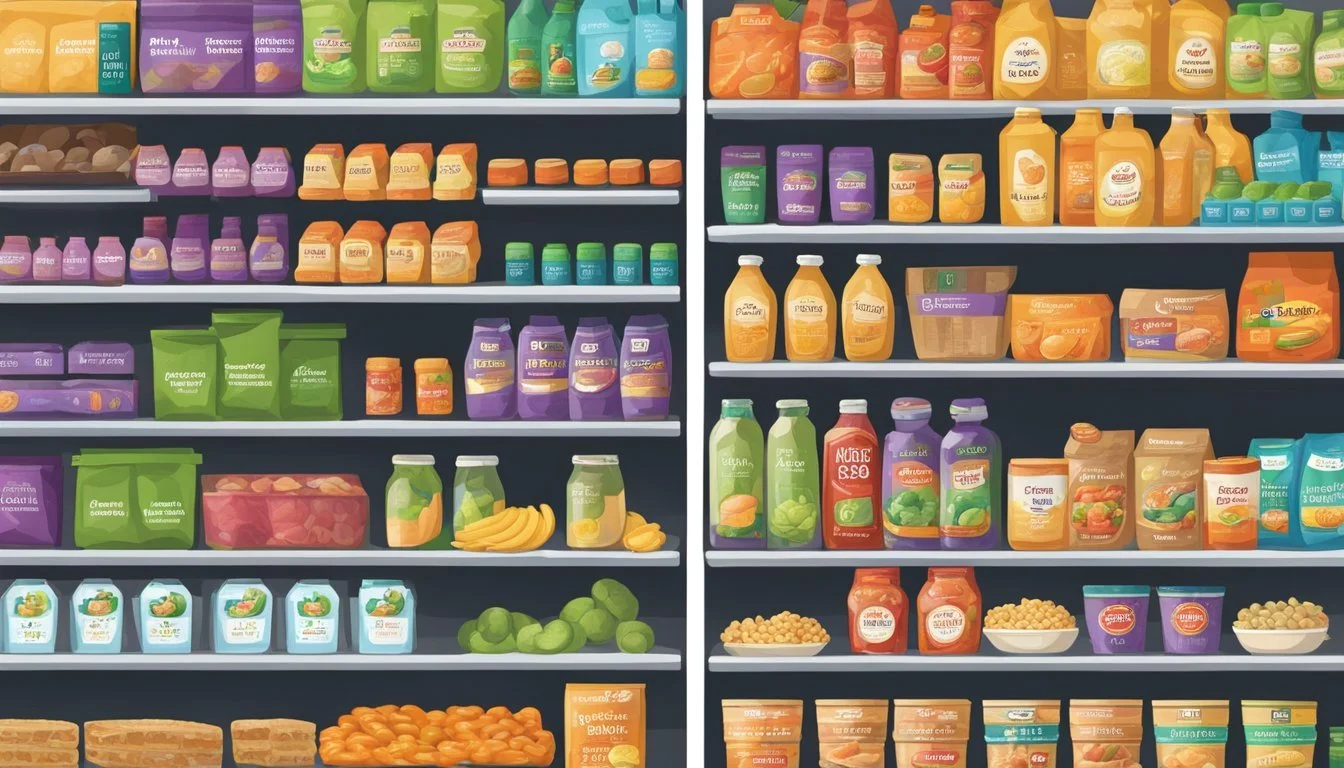Is Hannaford Cheaper Than Stop & Shop?
A price comparison of New England grocery chains
Grocery shoppers in the Northeast often debate which supermarket chain offers the best value for their money. Hannaford and Stop & Shop are two popular options that frequently come up in these discussions. Many consumers wonder which of these stores provides lower prices overall.
Based on recent price comparisons, Hannaford generally offers lower prices than Stop & Shop. A consumer study found that Hannaford's prices were approximately 11% below the average across all stores surveyed, while Stop & Shop's prices were about 5% lower than average. This suggests a noticeable difference in pricing between the two chains.
It's worth noting that prices can vary between individual store locations within each chain. Factors such as local competition and regional supplier costs can influence pricing strategies. Additionally, both Hannaford and Stop & Shop offer weekly sales and promotions that may impact the overall cost of a shopping trip.
Overview of Hannaford and Stop & Shop
Hannaford and Stop & Shop are two prominent grocery chains operating in the northeastern United States. They compete for market share by offering a range of products and services to meet consumer needs.
Company Histories and Market Position
Hannaford traces its roots back to 1883, starting as a small produce store in Portland, Maine. Today, it's a subsidiary of Ahold Delhaize, operating over 180 stores. Stop & Shop, founded in 1914 in Somerville, Massachusetts, has grown into a major regional chain with over 400 locations. It's also owned by Ahold Delhaize, creating an interesting dynamic of sibling rivalry within the same parent company.
Both chains have established strong regional presences. Hannaford is known for its focus on fresh products and competitive pricing. Stop & Shop emphasizes convenience and a wide selection of goods.
Store Locations and Geographic Reach
Hannaford primarily serves Maine, New Hampshire, Vermont, Massachusetts, and New York. Its stores are often found in smaller towns and rural areas, as well as suburban locations.
Stop & Shop has a broader reach, covering Massachusetts, Connecticut, Rhode Island, New York, and New Jersey. It maintains a strong presence in urban and suburban areas throughout these states.
The geographic overlap between the two chains occurs mainly in Massachusetts and New York, where they compete directly for customers.
Range of Products and Store Brands
Both Hannaford and Stop & Shop offer a comprehensive selection of groceries, including fresh produce, meats, dairy, and packaged goods. They also provide pharmacy services in many locations.
Hannaford's store brand, "Hannaford," covers a wide range of products. It's known for its "Guiding Stars" nutrition labeling system, helping customers make healthier choices.
Stop & Shop features its own private label, "SB," across various product categories. The chain also offers a "Nature's Promise" line for natural and organic items.
Both stores have expanded their offerings to include prepared foods, grab-and-go meals, and online ordering with pickup or delivery options to meet evolving consumer preferences.
Comparing Prices and Deals
Hannaford and Stop & Shop differ in their pricing strategies and promotional offerings. A careful analysis reveals opportunities for savvy shoppers to maximize savings at both stores.
Price Difference and Saving Strategies
Hannaford generally offers lower prices compared to Stop & Shop. Research indicates Hannaford's prices are approximately 11% below the average among surveyed stores. This translates to significant savings for regular shoppers.
A family spending $250 weekly on groceries could save over $2,300 annually by choosing Hannaford. To maximize savings, shoppers should:
Compare unit prices
Buy store brands when available
Stock up on sale items
Use digital coupons
Stop & Shop's prices tend to be higher, but they often run deeper discounts on specific items. Savvy shoppers can benefit by cherry-picking these deals.
Discounts and Deals Analysis
Both stores offer weekly specials, but their approaches differ. Hannaford focuses on everyday low prices with fewer dramatic markdowns. Their "Great Values" program highlights consistent savings on staple items.
Stop & Shop runs more frequent promotions, including:
Buy One, Get One Free deals
Multi-buy discounts (e.g., 10 for $10)
Digital-only deals
These promotions can lead to substantial savings on specific items, but require more planning to take full advantage. Shoppers should check weekly circulars and apps for both stores to compare current offers.
Loyalty and Reward Programs
Hannaford's My Hannaford Rewards program offers:
2% earnings on store brand purchases
Personalized coupons
Digital receipts
Stop & Shop's Gas Rewards program provides:
1 point per dollar spent
10¢ off per gallon for every 100 points
Extra gas savings during promotional periods
Both programs are free to join and can lead to additional savings. Stop & Shop's gas rewards can be particularly valuable for frequent drivers, potentially offsetting some of their higher grocery prices.
Product Quality and Selection
Hannaford and Stop & Shop offer distinct product quality and selection experiences. Both chains prioritize fresh offerings and diverse options, but their approaches differ in key areas.
Produce and Organic Offerings Comparison
Hannaford emphasizes high-quality produce, with a robust organic selection. Their fruits and vegetables are often locally sourced when in season, ensuring freshness.
Stop & Shop provides a wide variety of produce but may not match Hannaford's organic range. Their conventional produce is generally good quality, though some customers report inconsistencies.
Both stores offer pre-cut fruit and vegetable options for convenience. Hannaford tends to have a slight edge in organic produce variety and overall quality.
Meat and Deli Options
Hannaford's meat department is known for its quality cuts and variety. They offer a selection of grass-fed and organic meats alongside conventional options. Their deli features Boar's Head products and house-made salads.
Stop & Shop provides a comparable meat selection, including organic and grass-fed options. Their deli counters offer a mix of national brands and store-brand products.
Both chains maintain quality standards in their meat departments, but Hannaford often receives higher marks for freshness and selection.
Dry Goods and Packaged Products
Hannaford offers a balanced mix of name-brand and store-brand dry goods. Their store brand, "Hannaford," is known for good quality at lower prices. They stock a variety of specialty and health-focused items.
Stop & Shop features a wide array of packaged products, including their "SB" store brand. They typically have a larger selection of national brands compared to Hannaford.
Both chains provide ample choices in staples like pasta, canned goods, and snacks. Hannaford may have a slight advantage in natural and organic packaged foods, while Stop & Shop often offers more variety in conventional products.
Consumer Experience and Service
Hannaford and Stop & Shop prioritize customer satisfaction through various service aspects. Both chains focus on improving checkout efficiency and enhancing the overall shopping environment to meet consumer needs.
Checkout Efficiency and Customer Service
Hannaford emphasizes quick checkout processes to reduce wait times. They offer self-checkout options and strive to maintain adequate staffing during peak hours. Stop & Shop has implemented similar strategies, including mobile scanning technology for customers to skip checkout lines entirely.
Both stores provide dedicated customer service desks for returns, inquiries, and special requests. Hannaford's staff receive regular training to ensure knowledgeable and friendly assistance. Stop & Shop has invested in employee development programs to enhance service quality.
Consumerpedia Podcast reviews indicate that Hannaford often receives praise for superior customer interactions. However, experiences can vary by location and individual staff members.
Store Layout and Shopping Comfort
Hannaford designs stores with wide aisles and clear signage to facilitate easy navigation. They prioritize logical product placement, grouping related items together for convenient access.
Stop & Shop has undergone recent renovations in many locations to improve shopping comfort. These updates include better lighting, more spacious produce sections, and reorganized layouts to streamline the shopping experience.
Both chains provide accommodations for customers with mobility issues, such as motorized carts and assistance with carrying groceries to vehicles. Hannaford and Stop & Shop also offer online ordering with pickup or delivery options, catering to customers who prefer alternative shopping methods.
Grocery Delivery and Online Services
Hannaford and Stop & Shop both offer convenient online grocery shopping and delivery services. These options provide flexibility and time-saving benefits for customers.
Comparison of Grocery Delivery Options
Hannaford To-Go allows customers to order groceries online for pickup or delivery. Pickup orders over $125 have no service fee, while orders under $125 incur a $1.99 fee. Delivery has a flat $10 fee for orders of $30 or more.
Stop & Shop partners with Instacart for delivery services. Instacart's delivery fees start at $3.99 for non-members. They offer an Instacart Express membership for $99/year or $9.99/month, which provides free delivery on orders over $35.
Both retailers have minimum order requirements. Hannaford's minimum is not specified in the search results, while Instacart has a $10 minimum order for Stop & Shop deliveries.
Online Shopping Features and Accessibility
Hannaford's online platform lets customers search products, browse departments, and select items from weekly flyers. Users can add substitutions and notes to their orders.
Stop & Shop's Instacart integration provides a user-friendly interface for browsing and selecting products. The service allows real-time communication with shoppers during the order fulfillment process.
Both retailers offer flexible pickup and delivery time slots. Hannaford recently increased its available time slots by 20%, enhancing convenience for customers.
Amazon and Walmart also compete in the grocery delivery space, with Amazon Prime offering free delivery on qualifying orders from Whole Foods and Amazon Fresh.
Market Comparison and Consumer Choices
Grocery shoppers face a range of options when selecting where to buy their food. Price and quality differences between stores can significantly impact household budgets and satisfaction.
Comparison With Other Grocery Chains
Market Basket stands out as a top choice for budget-conscious shoppers, offering prices up to 10% lower than the average supermarket. Hannaford and Target follow closely, with prices 11% and 8% below average respectively.
Stop & Shop's pricing varies by location. Some stores match competitors like Market Basket, while others charge higher prices.
Warehouse clubs like Costco and Sam's Club often beat traditional supermarkets on bulk items. Aldi and Trader Joe's attract bargain hunters with low prices on store-brand products.
Whole Foods and Wegmans cater to shoppers prioritizing organic and gourmet options, typically at premium prices.
Consumers' Perceptions and Preferences
Price remains a key factor for many shoppers, but quality also plays a crucial role. Market Basket rates highly for overall quality despite lower produce and meat ratings.
Whole Foods maintains a reputation for high-quality organic products. Wegmans earns praise for its diverse selection and prepared foods.
Convenience influences many consumers' choices. Shoppers may opt for nearby stores like Stop & Shop or Shaw's despite higher prices.
Some families mix shopping trips, buying staples at discount chains and splurging on specialty items at upscale markets.
Store loyalty programs and digital coupons impact shopping decisions, with tech-savvy consumers leveraging apps to maximize savings across multiple stores.
Additional Considerations
Grocery prices and value can vary based on factors beyond just the store name. Location and seasonal promotions play key roles in determining costs and product availability.
Impact of Location on Prices and Availability
Hannaford and Stop & Shop prices often fluctuate between urban and rural areas. In the Boston area, Hannaford tends to offer prices 11% lower than average. Stop & Shop's pricing may be higher in city centers due to increased operational costs.
Rural stores sometimes have limited product selection compared to their urban counterparts. This can affect the availability of specialty or organic items. Shoppers in less populated areas may find fewer store options, potentially reducing competition and increasing prices.
Seasonal and Promotional Pricing
Both chains run regular sales and promotions that can significantly impact costs. Holiday seasons like Valentine's Day often feature specials on items like roses or chocolates. Hannaford and Stop & Shop frequently offer loyalty programs and digital coupons to reduce prices on common items.
Seasonal produce availability affects pricing throughout the year. Summer months typically see lower prices on fresh fruits and vegetables. Winter may bring higher costs for out-of-season produce.
Smart shoppers can take advantage of these fluctuations by:
Planning meals around seasonal ingredients
Stocking up on non-perishables during sales
Using store loyalty cards and apps for extra savings








